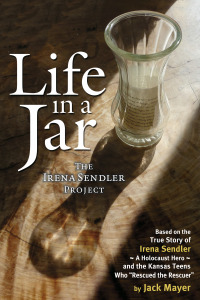|| Return to Table of Contents ||
A B S T R A C T

Interactive Multimedia and the Holocaust was an exploration into the role of multimedia, content, and the audience who participates in the educational process. By exploring the social context of the multimedia interaction, this project blended principles of Instructional Design with the traditions of theatre. The results were a CD-ROM prototype, a theatre presentation, and a Multimedia Design Plan, all presented within the context of a year-long exploration of the Holocaust at California State University, Chico.
The project aimed to use an interactive needs assessment as the basis of inviting the audience to interactively participate in the design of the CD-ROM. By working with a diverse mix of historians, educators, students, and audience members, the developer created a project based on what these people wanted: to listen to the stories of the survivors. Storytelling, oral history, theatre, instructional design, and multimedia development combined to create It Can Happen Again…/Stories of Children, Survival, and the Holocaust, a CD-ROM that challenged the learner to gather knowledge and change the title by interacting with the stories. “It Can Happen Again” was a warning echoed by historians and educators throughout the development of the project; “Never Again” was the commitment to change that the learner was challenged to find by listening to clues hidden in the stories.
The audience guided the developer with feedback, criticism, and participation; the results were a mixture of their needs, the capabilities of the technology, and the power of storytelling. It Can Happen Again…. was an example of content-centered art, merging the expressed needs of the audience with the possibilities of multimedia technology.
|| Return to Table of Contents ||



